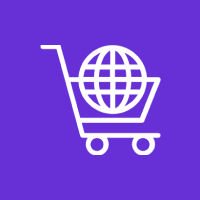Search engine optimization (SEO) is a component of any website’s methodology, and DNN (DotNetNuke) sites are no exception. If your site is powered by DNN, you can become more prominent, attract more organic traffic, and increase your search engine rankings by optimizing it for search engines. This complete guide will take you through best practices and major SEO strategies to enhance your DNN site’s SEO performance.
1. Understanding DNN and SEO
DNN is a popular content management system (CMS) utilized to create and manage websites. Despite DNN being extremely flexible, scalable, and having robust capabilities, some very important SEO opportunities are overlooked by its users. Following the SEO best practices ensures that your DNN website gets the amount of attention from search engines such as Google, Bing, and Yahoo that it deserves.
2. Prepare Your DNN Site for SEO Success
Before diving into specific strategies, you’ll need to ensure your DNN website is SEO-friendly from the start. Here are the initial steps:
Enable SEO-Friendly URLs: DNN provides an option to configure clean, human-readable URLs that improve both user experience and search engine crawlers’ ability to index your site. To enable SEO-friendly URLs in DNN, go to the Site Settings and check the “Use Friendly URLs” option.
Install SEO Modules: DNN comes with a selection of SEO modules that can make your site more visible. Modules like “SEO Optimization” can help manage metadata, site maps, and other SEO factors from your DNN dashboard.
Create an XML Sitemap: XML sitemaps make it easier for search engines to crawl and index your material promptly. DNN accommodates creating an XML sitemap that can be loaded in Google Search Console and other search engines.
3. On-Page SEO for DNN Sites
On-page SEO is the content on your website that you can optimize yourself. All of these factors have a gigantic impact on increasing your search engine ranking.
Title Tags and Meta Descriptions: Have each page of your DNN website have a specific title tag and meta description. They inform search engines what your page is about and motivate the user to click through from search results. Your title tags and meta descriptions must contain keywords.
Tip: Keep title tags around 50-60 characters long, and your meta descriptions between 150-160 characters long.
Header Tags (H1, H2, H3, etc.): Use header tags correctly to structure your content. Use the H1 tag for the page title, and the H2 and H3 tags to structure the subsections and add additional context. Search engines will interpret the structure of your content through header tags.
Content Optimization: Develop high-quality, keyword-based content that meets the search intent of your target audience. Make sure the content is original, useful, and closely related to your target keywords. Do not keyword-stuff; develop natural, helpful content that provides answers to users’ queries.
Image Optimization: Optimize images by compressing images so that page loading is quick. Use descriptive file names and alt text, as it tells search engines what the image is about. Instead of naming an image a name like “IMG_123.jpg,” name the image a descriptive name like “dnn-seo-optimization.jpg.”
4. Improvement in Site Speed and Mobile Optimization
Site Speed: Site speed is also a ranking factor according to Google, so having your DNN site load quickly is important. To speed up your site, optimize images, implement a content delivery network (CDN), and reduce excessive use of big scripts. Modules like “Cache Manager” within DNN can be used to speed up the loading of pages by caching heavily accessed content.
Mobile-Friendly Design: With mobile-first indexing taking over as standard for Google, having your DNN site designed to be mobile-friendly is a priority now. Employ responsive design methods in DNN to ensure your site appears wonderfully on any device. Plus, utilize Google’s Mobile-Friendly Test tool to test your site and pick up and repair any problems.
5. Link Building and Internal Linking Strategies
Internal Linking: Internal links are links from one of your site pages to another. They help search engines crawl your site better and make your site more accessible. Have a robust internal linking system for your DNN site, with links that happen in the context of your site linking to other relevant pages on your site.
Backlink Strategy: Obtaining backlinks from other high-authority sites can significantly boost your search engine rankings. Focus on creating high-quality content that others would want to link to, and attempt to contact industry influencers or related sites to get backlinks. Some methods of getting backlinks are guest blogging, press releases, and collaborations.
6. Utilize Structured Data (Schema Markup)
Schema markup is a type of structured data that enables search engines to better understand your content and show it in search results more precisely. You can apply schema markup to your pages through DNN. By using structured data for objects such as articles, products, and reviews, you can boost the visibility of your site and drive click-through rates higher.
7. Tracking and Evaluating SEO Performance
Once you have implemented these SEO strategies, it’s critical to track your site’s performance. Here’s how you can do it:
Google Analytics: Track your traffic, bounce rate, average session duration, and other key metrics with Google Analytics. It provides you valuable insights about how users are interacting with your site.
Google Search Console: Google Search Console helps you monitor and correct your website’s performance on Google Search. It also helps you submit your XML sitemap, track keyword performance, and verify there are no crawl errors.
SEO Audits: Conduct SEO audits every now and then with SEMrush, Ahrefs, or Moz to check the health of your website and identify areas for improvement.
8. Update Your Content Regularly
SEO is not a one-time activity but a repetitive process. Post new and relevant articles to your DNN website to keep it interesting to both users and search engines. Blog posts, new product pages, case studies, or even testimonials can be published.
Conclusion
Improving the SEO of your DNN website requires a combination of technical changes, optimization of content, and periodic monitoring. With the strategies outlined in this guide, you can rank your website higher in search engine results, improve organic traffic, and provide a better user experience. SEO is a long-term strategy, so be regular and patient, and you will feel the impact in the long term.
Contact Us Today













 Database Development
Database Development












































